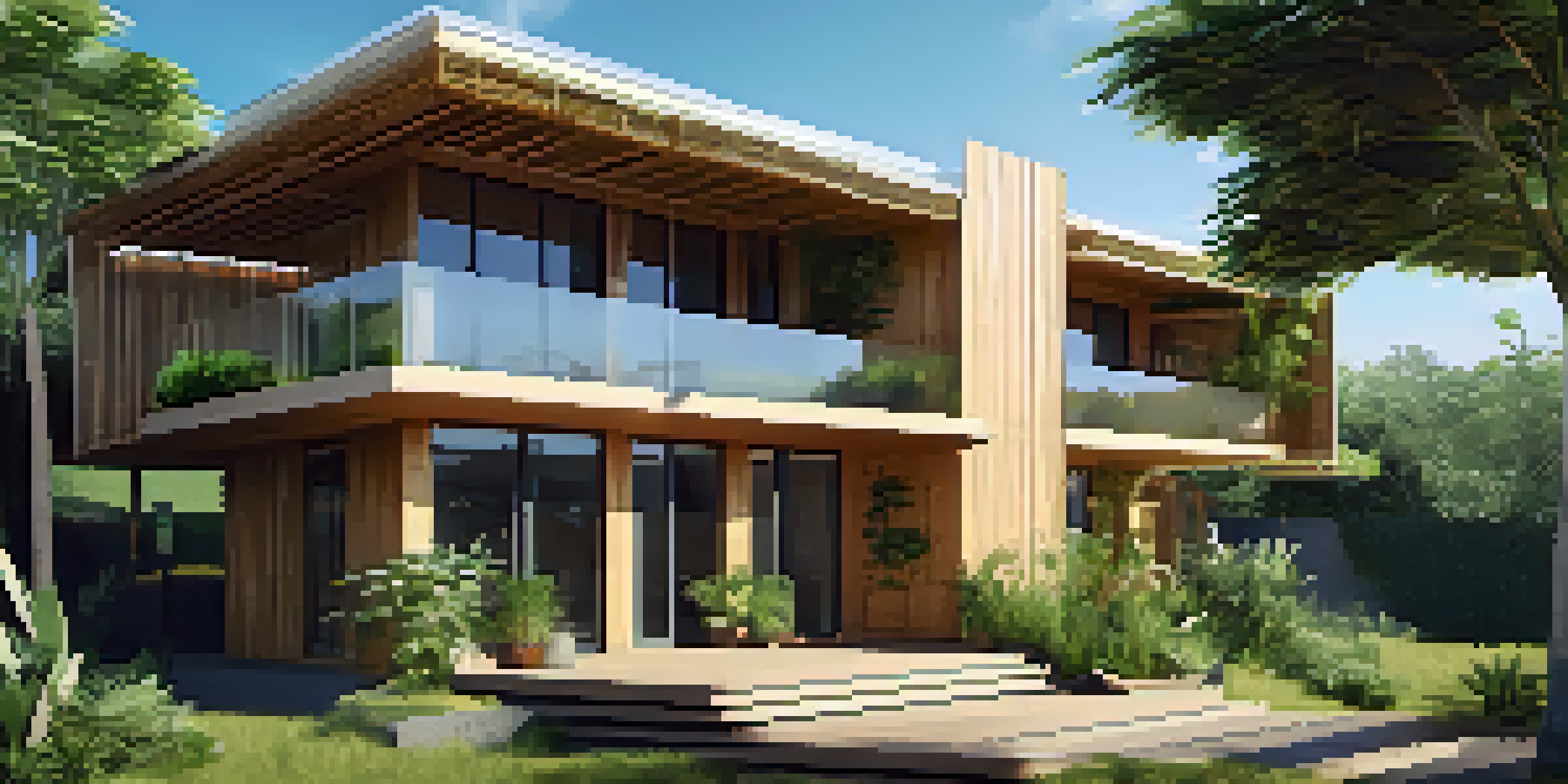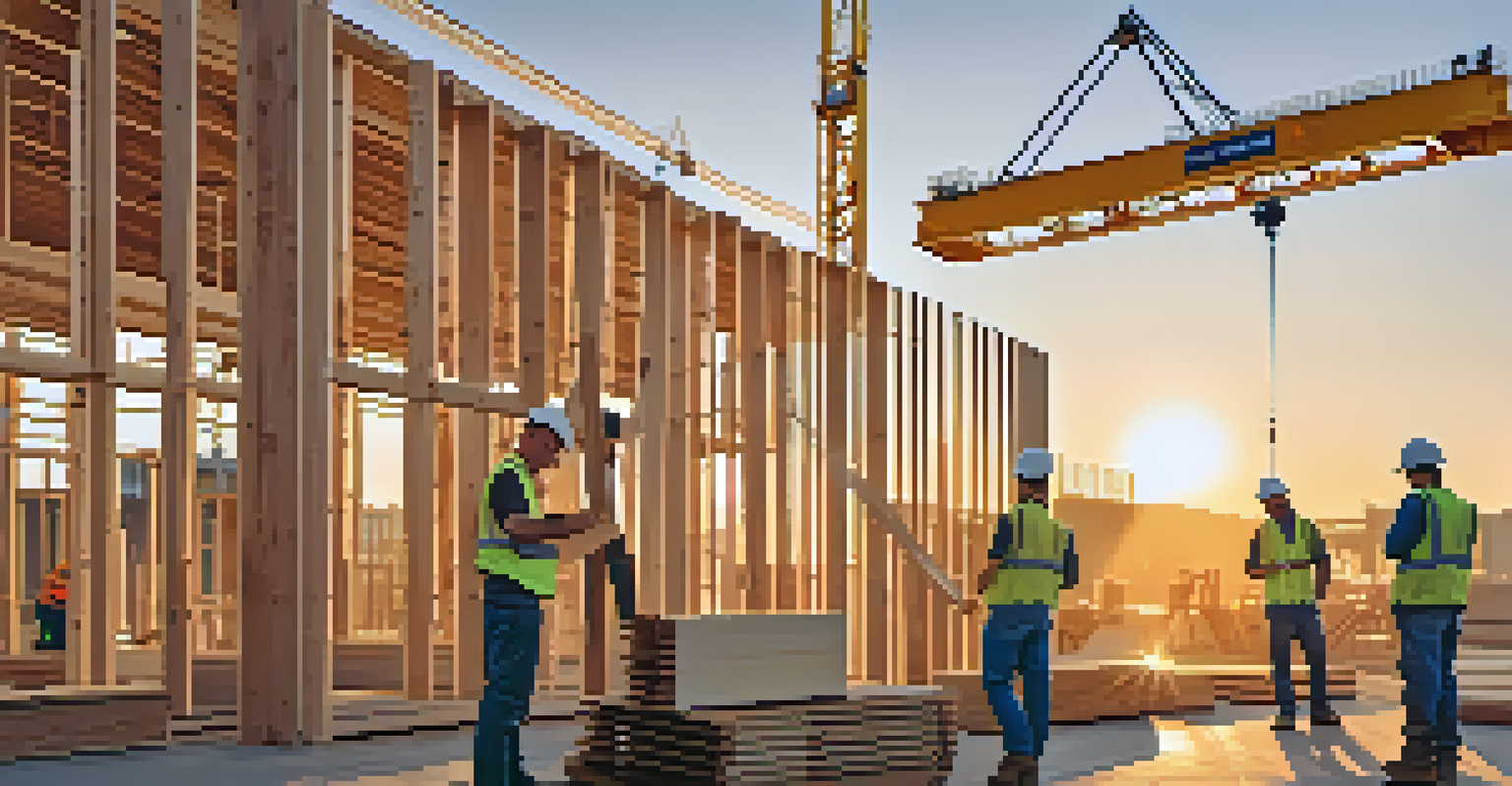The Future of Carbon-Neutral Building Materials in Real Estate

Understanding Carbon-Neutral Building Materials
Carbon-neutral building materials are those that offset their carbon emissions, resulting in a net-zero impact on the environment. This concept aims to reduce the carbon footprint associated with construction, making it a crucial part of sustainable building practices. By focusing on materials that either sequester carbon or have minimal emissions during production, the real estate industry can significantly contribute to climate change mitigation.
The greatest threat to our planet is the belief that someone else will save it.
For example, bamboo is a popular carbon-neutral material due to its rapid growth and ability to absorb carbon dioxide. Another material gaining traction is hempcrete, which not only acts as an insulating material but also stores carbon throughout its life cycle. These innovative options highlight the potential for building materials to play a vital role in creating environmentally friendly structures.
As regulations tighten and consumer demand for sustainable options rises, understanding and adopting carbon-neutral materials becomes imperative for real estate developers. This shift not only benefits the environment but also enhances the marketability of properties, appealing to eco-conscious buyers and investors.
Current Trends in Sustainable Construction
The construction industry is undergoing a significant transformation, with a growing emphasis on sustainability. Current trends include the use of recycled materials, smart technology, and energy-efficient designs that prioritize environmental responsibility. Real estate developers are increasingly incorporating these elements to meet the expectations of modern consumers who value sustainability.

One notable trend is the rise of modular construction, which allows for pre-fabricated elements made from sustainable materials. This method not only reduces waste but also shortens construction timelines, making it a win-win for builders and the environment. Additionally, green roofs and walls are becoming more popular, providing insulation and improving air quality while supporting biodiversity.
Carbon-Neutral Materials Reduce Impact
Using carbon-neutral building materials helps offset emissions and supports sustainable construction practices.
As these trends continue to gain momentum, the demand for carbon-neutral materials will likely increase. Developers who embrace these practices can position themselves as leaders in the market, attracting clients who prioritize sustainability in their purchasing decisions.
Innovative Materials Leading the Carbon-Neutral Charge
Several innovative materials are shaping the future of carbon-neutral construction, each with unique benefits. One standout is cross-laminated timber (CLT), which is not only strong and lightweight but also stores carbon, effectively sequestering it from the atmosphere. This makes CLT an attractive option for building multi-story structures while maintaining a low carbon footprint.
Sustainability is no longer about doing less harm. It's about doing more good.
Another exciting development is the use of bio-based materials, such as mycelium, the root structure of mushrooms. Mycelium can be grown into customizable forms, making it an environmentally friendly alternative for insulation and even bricks. These materials not only contribute to carbon neutrality but also demonstrate how nature can inspire innovative solutions in construction.
As research and development in this field continue to evolve, we can expect even more groundbreaking materials to emerge. Staying informed about these innovations will be crucial for builders and developers looking to stay ahead in a competitive market focused on sustainability.
The Role of Technology in Carbon-Neutral Construction
Technology plays a pivotal role in the advancement of carbon-neutral building materials. Innovations such as 3D printing and artificial intelligence are enabling architects and builders to design and construct more efficiently. These technologies allow for precise material usage, reducing waste and ensuring that the materials used are the most sustainable options available.
Moreover, software tools that analyze the lifecycle of materials can help architects select options that align with carbon neutrality goals. These tools assess the environmental impact of materials from extraction to disposal, providing a comprehensive view of their effectiveness in reducing carbon footprints. By leveraging technology, the construction industry can make informed decisions that prioritize sustainability.
Sustainability Drives Consumer Choices
Today's homebuyers increasingly seek properties that incorporate eco-friendly materials and energy-efficient designs.
As the intersection of technology and construction continues to evolve, we can expect further enhancements in the development and implementation of carbon-neutral materials. This synergy will be essential in driving the industry toward a more sustainable future.
Challenges Facing Carbon-Neutral Building Materials
Despite the promising outlook for carbon-neutral building materials, several challenges remain. One significant hurdle is the higher upfront costs associated with sourcing and implementing these materials. While the long-term benefits, such as energy savings and reduced environmental impact, are clear, the initial investment can deter some developers from making the switch.
Additionally, the availability and accessibility of these materials can be limited, particularly in certain regions. This can create logistical challenges for builders who wish to incorporate carbon-neutral options but find it difficult to source them locally. Overcoming these barriers requires collaboration between manufacturers, suppliers, and developers to create a more robust supply chain.
Finally, there is a need for education and awareness around the benefits of carbon-neutral materials. Many stakeholders in the real estate industry may not fully understand their advantages or how to implement them effectively. Addressing these challenges will be crucial for advancing the adoption of carbon-neutral building materials in the real estate sector.
The Future of Building Codes and Regulations
As the push for sustainability grows, building codes and regulations are beginning to evolve to support carbon-neutral materials. Governments and regulatory bodies are recognizing the importance of reducing carbon emissions in construction and are implementing stricter standards to encourage sustainable practices. This shift creates a more favorable environment for developers who prioritize eco-friendly materials.
For instance, some regions are adopting policies that incentivize the use of renewable and recycled materials in construction projects. These incentives can include tax breaks, grants, or expedited permits for projects that meet specific sustainability criteria. As these regulations become more prevalent, they will likely drive the demand for carbon-neutral materials even further.
Technology Enhances Construction Efficiency
Innovations like 3D printing and AI enable more efficient use of sustainable materials, reducing waste in construction.
Ultimately, the evolution of building codes will play a critical role in shaping the future landscape of real estate. By aligning regulations with sustainability goals, the industry can foster a culture of innovation and responsibility that benefits both the environment and the economy.
Consumer Demand for Sustainable Real Estate Options
Today's consumers are increasingly prioritizing sustainability in their purchasing decisions, and real estate is no exception. Many homebuyers and renters actively seek properties built with eco-friendly materials and energy-efficient designs. This growing demand is prompting developers to consider carbon-neutral building materials as a key selling point in their projects.
Moreover, the awareness of climate change and its impacts is influencing consumer behavior. Buyers are more informed than ever about the environmental consequences of construction practices, and they are looking for ways to reduce their own carbon footprints. By incorporating carbon-neutral materials, developers can create homes that align with the values of environmentally conscious consumers.

As this trend continues, the market for sustainable real estate will likely expand, offering developers new opportunities for growth. Embracing carbon-neutral materials not only meets consumer demand but also positions builders as leaders in a rapidly evolving market focused on sustainability.